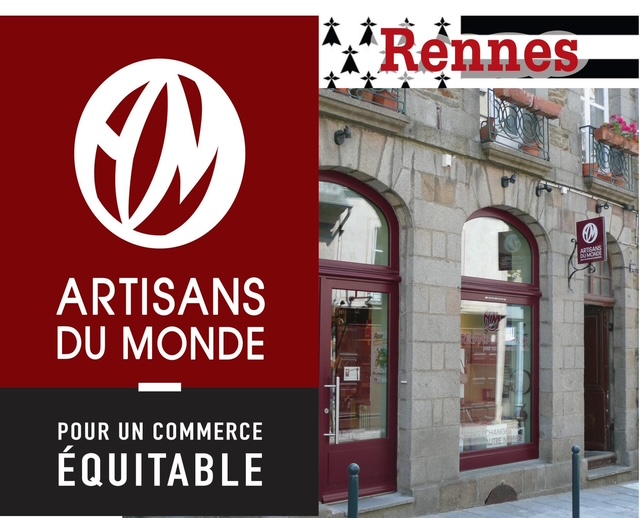
Wandering the Streets, Finding a Purpose
I often wander the streets of Rennes, my adopted city, looking for inspiration, discovering hidden corners, or simply letting curiosity guide my steps. One day, while strolling through the city center, I noticed a shop that, at first glance, seemed ordinary—with a lovely collection of handmade items. Little did I know, I was about to encounter something that would move my heart and reshape my sense of purpose.
A Braderie, a Boutique… and a Spark
June 25th, 2025 marked the day of la grande braderie de Rennes, a big annual street market. While walking around with my friend, we passed by the shop Artisans du Monde. Drawn in by the affordable prices, I bought two small boxes—slightly flawed but still beautiful.
Then my friend pointed out a jute turtle, labeled as handmade in Bangladesh—my home country. I was so surprised and touched to recognize something from back home, thousands of kilometers away.
I also spotted some beautifully painted vases in vibrant floral styles, immediately reminding me of the colorful rickshaw painting style in Bangladesh. I asked the woman at the counter where they came from. Her answer—”Bangladesh”—filled me with joy and pride.



Behind the Shopfront: A Mission of Solidarity
At the checkout, I picked up a brochure. Later at home, as I flipped through it, I discovered that Artisans du Monde wasn’t an ordinary store—it was a non-profit association committed to fair trade. They support artisans, especially women, from developing countries—including Bangladesh—to build dignified lives through their craftsmanship.
This deeply resonated with me. I grew up in a rural village where women create beautiful handcrafted items despite difficult living conditions. I felt an immediate connection. That’s when I decided to volunteer with the association—to help bring more visibility to the talent and traditions of these women on a global scale.
A Story Rooted in Struggle and Hope
The story of Artisans du Monde is closely tied to Bangladesh. Founded in 1974, the association initially supported women who had survived the war of independence, famine, and devastating floods. These women, often with little formal education but immense resilience, began crafting items using accessible materials like jute. With the support of socially engaged citizens and the UCOJUCO movement (Union of Twin Towns for Cooperation), initiated by Abbé Pierre, their creations were brought to France.
This wasn’t about charity—it was about fair trade. As early as 1964, at the UNCTAD conference in New Delhi, Global South countries demanded: “Trade, not aid.” That slogan became a cornerstone of the international fair trade movement.

A Movement that Became Global
Over the decades, fair trade grew into a powerful global movement. During the 1980s, the number of Artisans du Monde shops tripled in France. A central purchasing unit was created to manage imports and distribute products to the growing network of stores.
Certifications like Max Havelaar (1988) and the World Fair Trade Organization (1989) helped bring visibility and credibility. Today, fair trade goods have entered mainstream markets, and in 2017, for the first time, fair trade sales in France surpassed one billion euros.
My Commitment to Women’s Craftsmanship
As an artist and daughter of a Bangladeshi village, I’ve seen firsthand the beauty and strength behind women’s artisanal creations. Their skills, stories, and dreams deserve recognition and support.
Through this association, I finally feel like I’m taking a real step toward that goal—helping their work reach international audiences and showing the world the value of their artistry. I am proud to be part of a movement that brings meaning to art, trade, and human connection.

When Art Becomes a Bridge of Hope
My discovery of Artisans du Monde was an unexpected gift—a moment where my past, my artistic present, and my socially engaged future all came together. Each item in their store—every fabric, every brushstroke, every handmade piece—is a story of resilience, dignity, and beauty.
This is more than just art. It’s a bridge. And I’m honored to walk it.


Leave a Reply